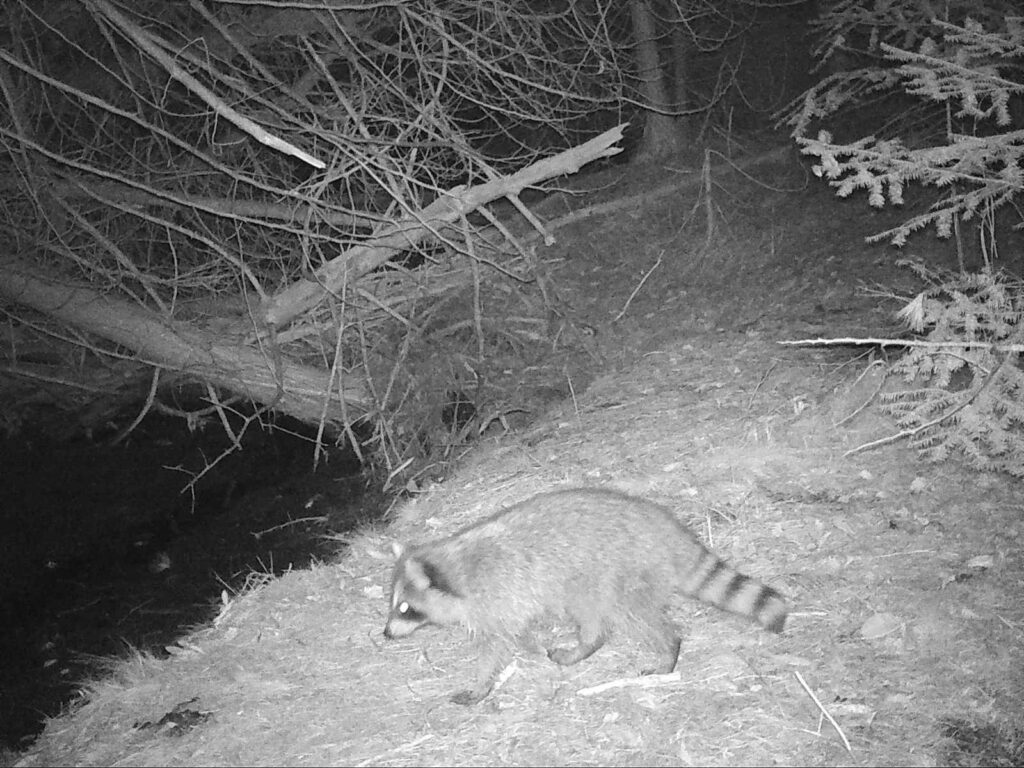Nature Notes: Human-Wildlife Interactions
By Sam Hoffman, Land Manager
At some point or another we have all had a memorable experience with wildlife in the outdoors. Time spent viewing animals in the wild can help us develop a closer connection to nature and renew our curiosity for learning more about the natural world around us. But wildlife encounters can also be troublesome. Whether observing an animal in its natural setting or coming across a sick or injured creature on a hiking trail, it’s important to know how to act when coming close to wildlife to protect humans and other animals.
Consider the Effects
First, it’s important to consider the effects of human presence on the natural behaviors of wildlife in their habitat, and how that can impact us. Many animals have evolved exceptional senses to help them survive, including sight, sound, and smell. That means most animals can detect us before we detect them. When an animal senses human presence, it can have a wide range of negative effects. A heightened sense of anxiety is common in animals that believe they are being threatened, especially if they sense the threat of predation. Unusual smells or sounds can disturb animals from their natural cycles, causing them added stress. The stress of human presence can be enough to reduce the survivorship of certain species without our knowledge and without directly interacting with them. When hiking, it is usually fine to observe most animals from a distance by staying on the trail and being quiet can help mitigate these impacts to wildlife.

Minimize your Impact
The Ridges has various policies for visitors to the preserve. Our trail etiquette prohibits hiking with dogs, riding bikes, smoking, picking plants, and littering. These restrictions are intended to maintain the natural properties of our preserve while allowing visitor access, and also to minimize disturbance to the wildlife that call the Sanctuary home. Prohibiting dogs, smoking, and littering in particular helps protect our local fauna the most. Keep these actions in mind when hiking elsewhere.
Even if we minimize our impact on wildlife populations and do our best to avoid conflict with them, it’s important to note that animal encounters can happen anytime and that wildlife can be unpredictable and potentially hazardous to humans. Each situation necessitates different analysis and solutions to the problem. Animal run-ins while hiking can cause conflict for a variety of reasons. Most commonly, certain wild animals may act in self-defense when humans get too close, especially if young are being protected.
Remove Yourself and Contact the Authorities
Some animals, like certain mammals and birds, can carry diseases that could be transmitted to humans. Signs that an animal is diseased can include exhibiting lethargic or confused behavior, or unusual movement such as excessive scratching or panting. Other unusual behaviors to look for include nocturnal animals being unusually active during the day and animals approaching very close to humans. If you believe you have observed an animal that seems sick or diseased, remove yourself from the immediate area of the animal and contact the proper authorities. The appropriate person to contact will depend on your location and the given situation. If you believe the animal to be a hazard to public human health, call your local police or sheriff’s office. If the animal does not pose an immediate threat to people, the local DNR warden should be contacted. Do not try to deal with the situation yourself.
The “Door County Leave No Trace” sigma we follow as ethical outdoor recreationists can also be applied to our behavior while out in nature, not just the physical impact we leave behind. When outdoors, be mindful of our impact on the habitats and species that we aim to protect, while also being aware of the potential hazards they pose.
Stewardship Workshop: Climate Change Resiliency
September 12, 9:00 am – 11:30 am
One of the most complicated global challenges of our time is climate change. In addition to its potential impacts on society, climate change is increasing the risk and harm to animals and plants already stressed by habitat loss, pollution, and non-native species. Join Ridges Land Manager Sam Hoffman for this stewardship workshop focused on climate change resiliency on our managed lands. We will review what we currently know about climate change and how it will impact natural areas, go into the field to look at examples of projects trying to inform management efforts, and go over what resources and tools private landowners can use to implement some of these practices on their own. Meets at the Cook-Albert Fuller Nature Center. Pre-registration required.
Fee: $30 Public | $25 Member
Register here.